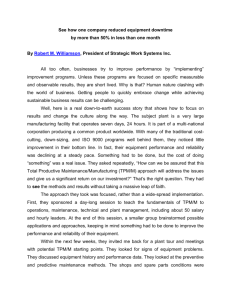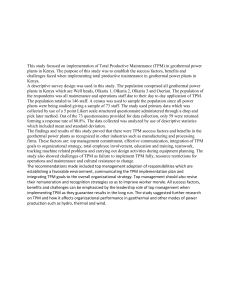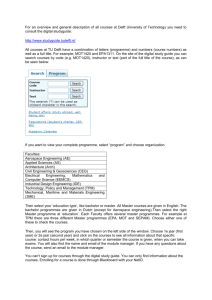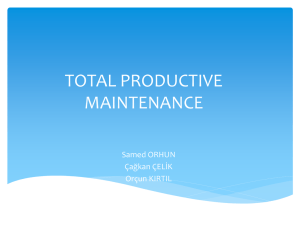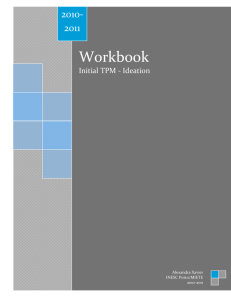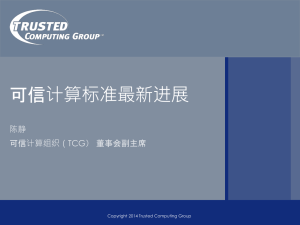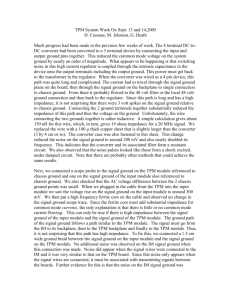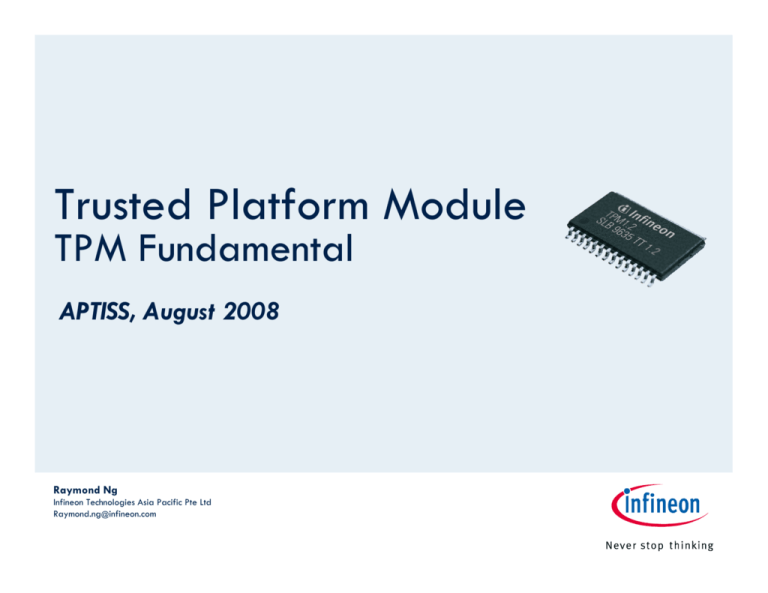
Trusted Platform Module
TPM Fundamental
APTISS, August 2008
Raymond Ng
Infineon Technologies Asia Pacific Pte Ltd
Raymond.ng@infineon.com
TPM Fundamental
Introduction to TPM
Functional Component of TPM
Root of Trust
TPM Keys
Integration of a TPM into a platform
Benefits of TPM
12 August 2008
Copyright © Infineon Technologies 2008. All rights reserved.
Page 2
Fundamental Trusted Computing Functionality
Security has become a major challenge for designers and developers of most
systems and applications. An attack or unauthorized access can lead to critical loss
of data
A mechanism is required to record (measure) what software is/was running
Requires to monitor the boot process
Needs an anchor to start the measurement from a Root of Trust
Nobody should be able to modify or forge these measurements
Some shielded location for the measurements is required
Now you know that your platform is in a defined state
Why should someone else believe this claim?
A mechanism to securely report the measurements to a 3rd party is required
Secure storage
Allow access to data only if system is in a known state
Cost efficient implementation and production
12 August 2008
Copyright © Infineon Technologies 2008. All rights reserved.
Page 3
Trusted Computing Group (TCG)
TCG is a non-profit organization formed to develop, define, and promote open
standards for hardware-enabled trusted computing and security technologies,
including hardware building blocks and software interfaces across multiple
platforms
TCG specifications enable more secure computing environment to protect and
strengthen the computing platform against software-based attacks and physical
attacks
TCG specifications are freely available from www.trustedcomputinggroup.org
Trusted Platform Module (TPM) is a major building block to achieve the goals of a
trusted computing system
12 August 2008
Copyright © Infineon Technologies 2008. All rights reserved.
Page 4
TPM Specification
TPM specification for 1.2 consists of 4 parts
Part 1: Design Principles
High-level architectural requirements
Defines TPM operational states and authentication protocols
Part 2: TPM Structures
External data definitions and structures
Defines TPM ordinals and general behaviour for each commands
Part 3: TPM Commands
Detail definition of commands
Part 4: Compliance
12 August 2008
Copyright © Infineon Technologies 2008. All rights reserved.
Page 5
Trusted Platform Module (TPM)
Specification defines two generic portions of the TPM
Shielded locations
An area where data is protected against interference from the outside exposure
The only functions that can access [read or write] a shielded location is a protected capability
Protected capabilities
A function whose correct operation is necessary in order for the operation of the TCG subsystem
to be trusted
Both shielded locations and protected capabilities are implemented in hardware
and therefore resistant against software attacks
The TPM is a platform component
NOT a platform all by itself
TPM becomes a permanent component of the platform
The TPM is NOT an active component, always a responder to a request and never
initiates an interrupt or other such operation
TPM cannot alter execution flow of system (e.g. booting, execution of applications)
12 August 2008
Copyright © Infineon Technologies 2008. All rights reserved.
Page 6
Integrating Trust and Security into
Computing Platforms using a Security Chip
Standard
Processor System
Easy to program
Easy to change
Easy to attack
TPMSecurity Module
Trusted platform
Shielded and encapsulated chip
Controlled interface to external
Trusted software in a protected hardware
=> Security functions, protected against manipulations
12 August 2008
Copyright © Infineon Technologies 2008. All rights reserved.
Page 7
TPM Functions and Features Overview
TPM must be in Hardware
Has a unique and signed Endorsement Certificate
TPM MUST be bound (=soldered) to the platform
TPM provides secure storage for
Platform metrics
SHA-1 for platform integrity measurements
Platform keys/certificates
physically and cryptographically bind secrets to a platform
User keys/certificates
Supports an Owner- and User-separation role model
Seals and binds data/keys/applications to the platform
12 August 2008
Copyright © Infineon Technologies 2008. All rights reserved.
Page 8
Common Misconceptions
The TPM does not measure, monitor or control anything
The TPM is a passive device in the system
The TPM has no way of knowing what was measured
Measurements are made by host software and sent to the TPM
TPM does not perform bulk encryption
(e.g. File and Folder encryption or Full Disk encryption)
Digital Right Management (DRM) is not a goal of TCG specifications
All technical aspects of DRM are not inherent in the TPM
TPM can work with any operating systems or application software
The specification is open and the API is defined, no TCG secrets
12 August 2008
Copyright © Infineon Technologies 2008. All rights reserved.
Page 9
Functional Components of TPM
Raymond Ng
Infineon Technologies Asia Pacific Pte Ltd
Raymond.ng@infineon.com
TPM Hardware
I/O
Manages information flow over the communications
bus
Typically LPC - Low Pin Count Bus
Active Shield
Secure
Controller
Asymmetric
Key
Generator
ROM
ACE (RSA)
2048-bit
I/O
(LPC Bus)
Secure Controller
Command verification
Execution of the appropriate command code
Controls internal TPM execution flow
RAM
SHA-1
EEPROM
TRNG
Active
Shield +
Sensors
ROM
TCG firmware
Tick Counter
EEPROM
User data
TPM keys [e.g., Endorsement Key (EK) and Storage
Root Key (SRK) and owner secret]
Endorsement Key Certificate
12 August 2008
Copyright © Infineon Technologies 2008. All rights reserved.
Page 11
TPM Hardware
Asymmetric key generation (RSA; storage and key
size >= 2048)
Support 1024, 2048 bit keys
Use of 2048 recommended
To use an RSA key it has to be loaded into the TPM
The TPM can encrypt and decrypt using RSA keys
The use of keys is segregated into signing or
encryption uses
Active Shield
Secure
Controller
Asymmetric
Key
Generator
ROM
ACE (RSA)
2048-bit
I/O
(LPC Bus)
RAM
SHA-1
EEPROM
Advanced Crypto Engine (ACE)
Asymmetric key operations (up to 2048-bit key
length)
12 August 2008
Copyright © Infineon Technologies 2008. All rights reserved.
TRNG
Active
Shield +
Sensors
Tick Counter
Page 12
TPM Hardware
SHA-1 engine (160 bits)
SHA-1 for Hashing (measuring of integrity)
Primarily used by the TPM as its trusted hash
algorithm
Exposed to the outside to be used in the boot process
TPM is not a crypto accelerator
No regular structure
Active Shield
Secure
Controller
Asymmetric
Key
Generator
ROM
ACE (RSA)
2048-bit
I/O
(LPC Bus)
RAM
Random Noise Generator (RNG)
Source of randomness in the TPM
Used for nonce (Number Used Once) and key
generation
The RNG output is used both internally by the TPM
and is offered to outside consumers of randomness
SHA-1
EEPROM
TRNG
Active
Shield +
Sensors
Tick Counter
Tick counter
Provide an audit trail of TPM commands
12 August 2008
Copyright © Infineon Technologies 2008. All rights reserved.
Page 13
TPM Hardware
Security Features
Active shield
Over/Under voltage detection
Low/High frequency sensor
Reset filter
Memory encryption
Active Shield
Secure
Controller
Asymmetric
Key
Generator
ROM
ACE (RSA)
2048-bit
I/O
(LPC Bus)
RAM
SHA-1
EEPROM
TRNG
Active
Shield +
Sensors
12 August 2008
Copyright © Infineon Technologies 2008. All rights reserved.
Tick Counter
Page 14
Typical Attacks
Software attacks
Exploit implementation flaws!
Fault attacks
Physical perturbation of Vcc, clock,
temperature, UV light, X-Rays
Side channel attacks
monitoring of analogue signals
e.g. time, power, electro-magnetic
Invasive attacks
Reverse the content of the ROM
Probing data
Circuit modification
12 August 2008
Copyright © Infineon Technologies 2008. All rights reserved.
Page 15
Root of Trust
Raymond Ng
Infineon Technologies Asia Pacific Pte Ltd
Raymond.ng@infineon.com
Roots of Trust
Root of Trust is a hardware or software mechanism that one implicitly trusts
Root of Trust for Measurement (RTM)
Uses Platform Configuration Registers (PCR) to record the state of a system
Static entity like the PC BIOS
Root of Trust for Reporting (RTR)
Entity trusted to report information accurately and correctly
Uses PCR and RSA signatures to report the platform state to external parties in
an unforgettable way
Root of Trust for Storage (RTS)
Entity trusted to store information without interference leakage
Uses PCR and RSA encryption to protect data and ensure that data can only be
accessed if platform is in a known state
12 August 2008
Copyright © Infineon Technologies 2008. All rights reserved.
Page 17
Platform Configuration Register (PCR)
Platform Configuration Registers (PCR) is a 160 bit storage location for integrity
measurements
Shielded location inside TPM
The integrity measurement of executables is cumulatively stored in a PCR
PCR[i] = SHA-1(PCR[i] || newMeasurement)
PCR extends are not commutative (i.e. measuring A then B does not result in the
same PCR value as measuring B then A)
PCR can keep track of unlimited number of measurements
What can be measured and cumulatively stored (cannot be overwritten until
reboot)
BIOS, ROM, Memory Block Register [PCR index 0-4]
OS loaders [PCR index 5-7]
Operating System (OS) [PCR index 8-15]
Debug [PCR index 16]
Localities, Trusted OS [PCR index 17-22]
Applications specific [PCR index 23]
12 August 2008
Copyright © Infineon Technologies 2008. All rights reserved.
Page 18
Chain of Transitive Trust
1
4
1
1
4
4
3
2
2
3
2
3
M
TP
Measurement
Log
12 August 2008
Copyright © Infineon Technologies 2008. All rights reserved.
#
Steps
1
Measurement
2
Extend PCR
3
Log Event
4
Transfer control
Page 19
PCR Event Log
Together with PCR extensions also PCR event log entries can be made
A log entry contains the PCR number, the value that was extended into the PCR
and a log message (giving details what was measured)
The event log does not need to be protected by the TPM and therefore is
managed on external mass storage (managed by Trusted Software Stack - TSS)
The event log can be used to validate the individual steps that lead to the current
PCR value
Calculate the extends in software starting at the beginning of the log
Compare the result to the PCR value in the TPM
If the values match the verifier has assurance that the log was not tampered with
PCR content is digitally signed inside the TPM
12 August 2008
Copyright © Infineon Technologies 2008. All rights reserved.
Page 20
Root of Trust for Measurement
Goal is to measure system state into PCR
Using PCR a communication party can be convinced that the system is in some known state
System users are NOT prevented from running any software they want, but the execution is
logged and cannot be denied
From the RTM the trust is extended to other system components. This concept is called
transitive trust
Involved steps:
Measure (compute the hash value of) the next entity: e.g. the BIOS measures the OS loader
The measurement is extended into one of the TPM PCR
Control is passes to the measured entity
This process is continued for all components of a system up to user level applications
PC client specifications defines which PCR are used for what
Measurements change with system updates and patches
12 August 2008
Copyright © Infineon Technologies 2008. All rights reserved.
Page 21
Root of Trust for Reporting
Root of Trust for Reporting (RTR) is a mechanism to securely report that state of a
platform to a third party. The idea is to digitally sign the PCR values inside the
TPM and send the signature to the requester
Endorsement Key (EK) forms the RTR
2048 bit RSA key contained inside the TPM
Private part never leaves the TPM (only exists in shielded location)
EK is unique for every TPM and therefore uniquely identifies a TPM
Typically generated by TPM manufacturer in the fab inside the TPM
The EK is backed by an EK certificate typically issued by the TPM manufacturer
The EK certificate guarantees that the key actually is an EK and is protected by
a genuine TPM
EK cannot be changed or removed
12 August 2008
Copyright © Infineon Technologies 2008. All rights reserved.
Page 22
Root of Trust for Storage
Root of Trust for Storage (SRK) is the root of the TPM key hierarchy and never
leaves the TPM
Use of TPM keys for encrypting data and keys
Two approaches
Without using PCR: bind/unbind
With using PCR: seal/unseal
Binding
Happens outside of the TPM
Encrypt data with the public part of a TPM key
Only the TPM that the key pair belongs to can decrypt the data and private key can
only be used inside the TPM
Binding to a specific TPM, use a non-migratable binding key
Unbinding
Decryption of bound data inside the TPM using the private key
12 August 2008
Copyright © Infineon Technologies 2008. All rights reserved.
Page 23
Root of Trust for Storage
Sealing
A way to combine measurements (PCR content) and external data
Encrypt externally provided data with reference to a specific PCR state
Only the TPM that sealed the data can do the unseal (ensured by including a nonce that
only is known to this specific TPM)
PCR values specified do not have to be the platforms current PCR values but can be
some other (future) PCR values
Using a storage key
Unsealing
Load key that was used for sealing into TPM
Decrypt sealed blob inside TPM
TPM checks the tpmProof included in the internal data, if the nonce does not match the
one of the TPM it returns an error
If the specified PCR values do not match the platforms current PCR values an error is
returned
12 August 2008
Copyright © Infineon Technologies 2008. All rights reserved.
Page 24
PCR Revisited
Summary of PCR usage scenarios
Protecting data (TPM_Seal/TPM_Unseal)
Specify set of PCR upon key creation where key is only usable if these PCR are present
Collection of measurements is done outside of the TPM by the platform (chain of
trust starting at the RTM)
Chain must not be broken
12 August 2008
Copyright © Infineon Technologies 2008. All rights reserved.
Page 25
TPM Keys
Raymond Ng
Infineon Technologies Asia Pacific Pte Ltd
Raymond.ng@infineon.com
TPM Keys
Endorsement Key (EK)
Unique platform identity
Created by manufacture in a secure environment
Non-migratable, store inside the chip, cannot be remove
Storage Root Key (SRK)
2048 bit RSA key
Is top level element of TPM key hierarchy
Created during take ownership
Non-migratable, store inside the chip, can be remove
Storage Keys
RSA keys used to wrap (encrypt) other elements in the TPM key hierarchy
Created during user initialization
Signature Keys
RSA keys used for signing operations
Must be a leaf in the TPM key hierarchy
12 August 2008
Copyright © Infineon Technologies 2008. All rights reserved.
Page 27
Take Ownership of a TPM
TPM is shipped in "unowned" state
To make proper use of TPM, platform owner has to execute "TakeOwnership"
operation
Setting owner password - inserting a shared secret into the TPM (stored in shielded
location)
Certain TPM operations require owner authorization
Physical presence allows access to certain (otherwise owner protected) TPM
functionality; does not reveal any TPM secrets (e.g., ownership password cannot be
revealed using physical presence)
ForceClear allows to "clear" the TPM using physical presence
SRK is created as part of TakeOwnership
(Private) SRK is stored inside the TPM and never leaves it
Password required for SRK usage can be set
12 August 2008
Copyright © Infineon Technologies 2008. All rights reserved.
Page 28
Creating TPM Keys
EK and SRK are the only keys permanently stored inside the TPM
TPM keys are generated inside the TPM
To use a TPM key, it has to be loaded into the TPM
Management of key slots is done in software – Trusted Software Stack (TSS)
TPM
Endorsement Key
Storage Root Key
RSA
Engine
Key Slots
RSA Engine creates RSA key
To create a key pair, a parent key has to be specified
12 August 2008
Copyright © Infineon Technologies 2008. All rights reserved.
Page 29
TPM Key Hierarchy
When moving out keys from a TPM a key hierarchy is established
Whenever a key is exported from the TPM, its private part is encrypted using the
public key of the parent
In TCG terminology the child key is wrapped using the parent key
Since the parents private key (required to load/decrypt the child key) never
leaves the TPM in plain, the private key of a TPM can never be decrypted/used
outside of the TPM
The private SRK, sitting at the top level of the key hierarchy, is never exported
from the TPM
Storage keys form the nodes of the key hierarchy while signing keys always are
leaves
12 August 2008
Copyright © Infineon Technologies 2008. All rights reserved.
Page 30
Unloading TPM Keys
Key hierarchy with SRK as root
TPM
Endorsement Key
Storage Root Key
Private SRK never leaves the TPM
Exporting key blob from TPM
RSA
Engine
Encrypt
Key Slots
Key Manager (TSS)
Private part is encrypted with public parent
key before key blob leaves TPM
Mass-storage
(e.g. hard-disk)
12 August 2008
Copyright © Infineon Technologies 2008. All rights reserved.
Page 31
Loading TPM Keys
Load signing key into TPM to use it for
signing operation
TPM
Endorsement Key
Storage Root Key
RSA
Engine
Decrypt
Key Slots
Establish entire key chain up to SRK
Decrypt private key of storage key using
the private SRK
Key Manager (TSS)
Requires SRK usage secret
Mass-storage
(e.g. hard-disk)
12 August 2008
Copyright © Infineon Technologies 2008. All rights reserved.
Page 32
Clearing a TPM
Resetting the TPM to the factory defaults
Clearing requires owner secret or physical presence (ForceClear)
There are no mechanisms to recover a lost TPM owner password
Tasks executed when clearing the TPM
Invalidation of the SRK and thereby all data protected by the SRK will not be able to
decrypt
Invalidation of the TPM owner authorization value
Reset of TPM memory to factory defaults
EK is NOT affected
PCR values are undefined after clear (reboot required)
ForceClear is only available during boot (and disabled thereafter)
OwnerClear can also be disabled (permanent is ForceClear required)
12 August 2008
Copyright © Infineon Technologies 2008. All rights reserved.
Page 33
Integration of a TPM into a
platform
Raymond Ng
Infineon Technologies Asia Pacific Pte Ltd
Raymond.ng@infineon.com
PC Motherboard Architecture:
TPM is connected to the LPC-Bus
CPU
(e.g.Pentium)
North
Bridge
South
Bridge
(e.g. Intel, VIA)
(e.g. Intel, VIA)
PCI
USB
AC97
IDE
LPC-Bus
(„low pin count“)
Main
Memory
SuperIO
(SDRAM)
FD
Evaluation-Kit:
Daughter card
PS/2
Parallel Serial
Port
Port
PC Platform
12 August 2008
Copyright © Infineon Technologies 2008. All rights reserved.
Page 35
TPM-Driver and API are as important as a TPM-chip:
Customer expect availability of a complete solution package
Application
Host - Platform
Crypto Infrastructure
Application
TCG Crypto
Service Provider
TSS Service Provider
Boot-BIOS
Memory
Absent/Present
Driver
TSS Core Services
TPM Device-Driver Library
TPM-Device Driver
TPM-Firmware (TPM-OS and Security Functions)
TPM-Processor + Crypto-Processor + Protection-Mechanisms
12 August 2008
Copyright © Infineon Technologies 2008. All rights reserved.
TPM
Chip
Page 36
Trusted Software Stack
TPM Device Driver (TDD)
A kernel-mode component that receives byte-streams from TDDL, sends to TPM and then return
responses from TPM back to TDDL
Handles system power states transitions (S0 – S5) for the TPM chip
TPM Device Driver Library (TDDL)
Provides a user-mode interface
A single-instance, single threaded module
All TPM commands sent to TDDL must be serialized
TCG Core Service (TCS)
Synchronizes access to the TPM from multiple applications
Provides key and authorization context caching
Controls the TPM during power mode transitions
TCG Service Provider (TSP)
Persistent storage of keys
Handling of Authorization Secrets
Handling of Authorization Sessions
Encryption of Data
Hashing of Data
12 August 2008
Copyright © Infineon Technologies 2008. All rights reserved.
Page 37
Benefits of TPM
Raymond Ng
Infineon Technologies Asia Pacific Pte Ltd
Raymond.ng@infineon.com
Benefits of TPM
Enhance confidence in platform
Proof that a platform is a Trusted Platform
Binding of data to a particular platform
Sealing data to a trusted system state/configuration
Owner privacy and control
Secure boot
Low cost exportable technology
12 August 2008
Copyright © Infineon Technologies 2008. All rights reserved.
Page 39
12 August 2008
Copyright © Infineon Technologies 2008. All rights reserved.
Page 40

